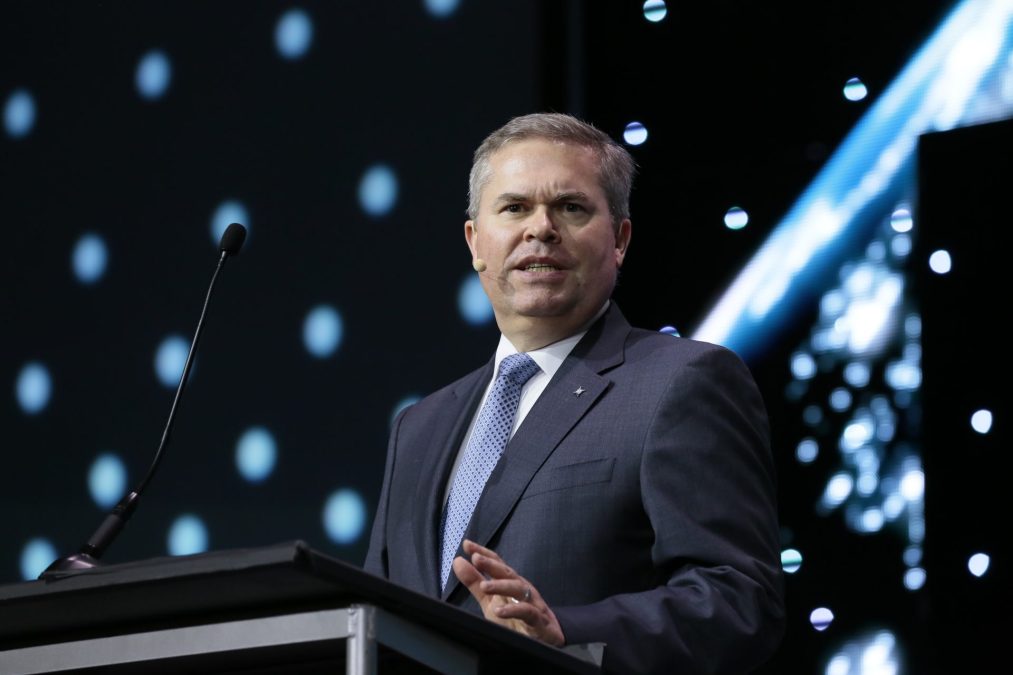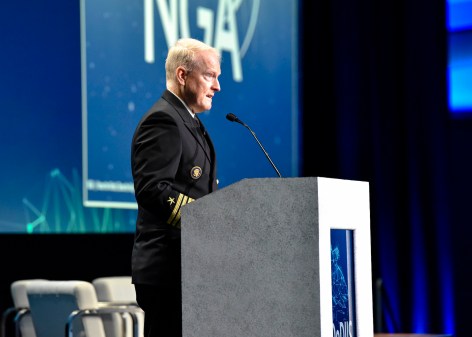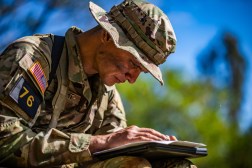AI will ‘revolutionize’ the way NATO looks at geospatial intelligence, leader says

KISSIMMEE, Fla. — The security environment in Europe and around the world is dramatically shifting, and that’s spurring NATO to prioritize AI and other technological tools to bolster its geospatial intelligence enterprise, according to a top official.
Geospatial intelligence, or GEOINT, broadly refers to imagery and data that’s gleaned from satellites, radar, drones and other means — and then analyzed by experts to visually depict and evaluate physical features and specific geographically referenced activities on Earth.
“To preserve and further advance our technological edge is one of the key pillars of the NATO 2030 agenda. And in this effort, geospatial artificial intelligence — or GeoAI — is a key area which will revolutionize the way that we look at GEOINT in the future,” NATO’s Assistant Secretary General for Intelligence and Security Scott Bray said during his keynote at the annual GEOINT Symposium on Tuesday.
GeoAI methods combine artificial intelligence with geospatial data and analysis technology to boost understanding and solve complex, spatial problems.
“Spatial machine learning algorithms and deep learning techniques have become extremely powerful, fueled by unprecedented computing power. Leveraging these technologies on large collections of imagery, or geospatial data, will allow us to greatly improve the intelligence production cycle through applications like automatic change detection, and in areas of interest or socio-economic analysis, maritime safety, analysis of space and cyber events, and many others,” Bray said.
He pointed to NATO’s Defense Innovation Accelerator for the North Atlantic (DIANA) initiative as a key mechanism via which the allies involved can directly connect with commercial and academic partners around innovative capabilities and activities like GeoAI.
Launched in 2022, DIANA is designed to expand multinational cooperation and foster an innovation network to more strategically deploy emerging and dual-use technologies.
Building on momentum — and the expansion of NATO to include Sweden and Finland — since then, the alliance recently confirmed plans to host tech accelerator sites at DIANA locations in 28 nations.
Outside of that well-backed innovation initiative though, Bray said NATO members still have a lot to do to improve their ability to share data and work interoperably at speed and scale.
“With 32 allies, with lots of intelligence that comes in — ultimately, in a world in which we are faced with not just the Russia and Ukraine challenge, but with so many other issues — then ultimately, what we need is more capacity for rapid exploitation and sense-making of that intelligence,” he explained. “That is a place where, certainly, private industry is leading,” which means it’s a ripe area for NATO to pursue new and deepen existing partnerships, he added.
Bray — who has extensive intelligence community experience and previously served as the U.S. acting director of naval intelligence — emphasized that today’s security environment is different.
“We’re not [just] talking about great power competition right now in Europe — we’re talking about the fact that there is open conflict in Europe. And the degree of integration that it is going to take between all the allies, to include the United States, and with our private industry partners to ensure that our defense industrial capacity and our intelligence industrial capacity is well-integrated, is absolutely essential for peace and stability in our era,” Bray said.






